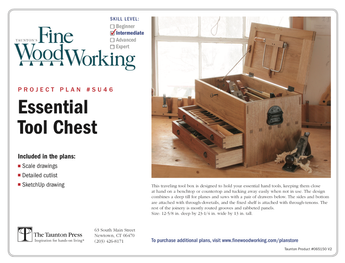I live in a region of Washington State that is surrounded by fruit tree orchards. I look out my shop window and see apple and cherry trees. These are short stubby trees that are annually pruned back to encourage fruit production not lumber. An orchard owner friend of mine removed a section of older cherry to replace them with new trees and has a large pile of cut up cherry trees (destined to become firewood if not rescued) which he allowed me to rummage through. I took a relatively straight 4′ long 10″ diameter log back to my shop to see what I would find inside. I was excited by the color of the chips and shavings when I cut the log down the center with my chain saw. I then re-sawed the two log halves on my band saw into some rough boards and then ran a couple through the planer. Wow, this is some very beautiful wood, nice cherry tone with some mineral streaking and a little spalting from having been on the ground awhile. The moisture content was way too high so I’ll have to be patient and allow it to dry before I can build anything with it. Now I just have to figure out a more efficient way to turn these short logs into lumber. I’ve tried this same experiment with apple wood in the past and was not that excited about the wood, too much checking and splitting. I still need to try pear, peach, apricot and nectarine wood.
Discussion Forum
Get It All!
UNLIMITED Membership is like taking a master class in woodworking for less than $10 a month.
Start Your Free TrialCategories
Discussion Forum
Digital Plans Library
Member exclusive! – Plans for everyone – from beginners to experts – right at your fingertips.
Highlights
-
Shape Your Skills
when you sign up for our emails
This site is protected by reCAPTCHA and the Google Privacy Policy and Terms of Service apply. -
 Shop Talk Live Podcast
Shop Talk Live Podcast -
 Our favorite articles and videos
Our favorite articles and videos -
E-Learning Courses from Fine Woodworking
-
-











Replies
Sounds like a goldmine! I read your post the other day, and didn't respond because I don't have actual experience drying orchard wood. I was curious and did a bit of research however, for what that's worth. It seems that most fruit wood contains lots of moisture, which it loses very quickly once cut into lumber, especially in your dry climate. The too quick drying is what causes the checking and cracking. After sealing the ends, the best suggestion seemed to be to wrap the boards with plastic for a week or so, in order to slow the drying process. I have done this with really wet walnut blanks for turning. Worked fine. I had them in plastic bags, which I just turned inside-out every few days.
Keep us posted on how you do with the orchard wood. Sounds like a great problem to have.
That's great. Good luck as it
That's great. Good luck as it dries.
I've been looking for "old growth" sagebrush here in New Mexico, but the planks tend to be pretty small (toothpicks for stickers). ;-)
Thanks, what should I use to seal the ends? Latex paint?
I've only used cherry wood
I've only used cherry wood from my back-yard trees. Ifound to be of little use, bery coarse and soft. I used it for fire-wood.
Tom
I know that cherry trees of different varieties are grafted onto a variety of root stocks. I'm wondering if your "unusable" cherry wood was from a rootstock less preferable for lumber. I'll let you know how it goes in a year or so.
I think both the apple and the cherry wood is worth playing with. A neighbor cut down a small ornamental cherry tree and I kept the trunk and it produced a small amount of nice lumber. Apple can be fun although it the wood I have cut tends to warp as it drys once dry though it cuts nicely. The apple is great for the BBQ I would take as much of that as I could. Be careful you might start thinking about a portable bandsaw mill:)
Troy
Oh, I've already thought
Oh, I've already thought about the band saw mill but I'll start with the chainsaw gadget I already have.
Some of the small stuff is great for turning as well.
I use latex that is left over form projects to seal wood.
Apple is used for smoking meats if your into that.
If you don't use it to smoke it still smells great.
Small lumber works for small projects. Wood planes?
It's nice to show someone something and be able to say where the wood came from. Now-a-days people think everything comes form a store.
I've got some apple, fruit
I've got some apple, fruit cherry, and plum wood - not from orchards, but trees growing on private properties that came down in storms or had to come down for some other reason. Fruit cherry very nice. Apple (at least what I have) isn't nearly as nice, colourwise and I've yet to crack into the rounds I have. Plum has a gorgeous red heartwood but is very hard to turn successfully - my thin-walled bowls kept blowing up. I am told that due to the way they grow - in a spiral. Like most (or all?) fruitwoods, it's a dense wood.
To minimize checking you need to seal the end grain as soon as possible - as soon as the tree is felled if practical. Some people have reported success with latex paint. I use a wax emulsion sold as an end-grain sealer.
This forum post is now archived. Commenting has been disabled